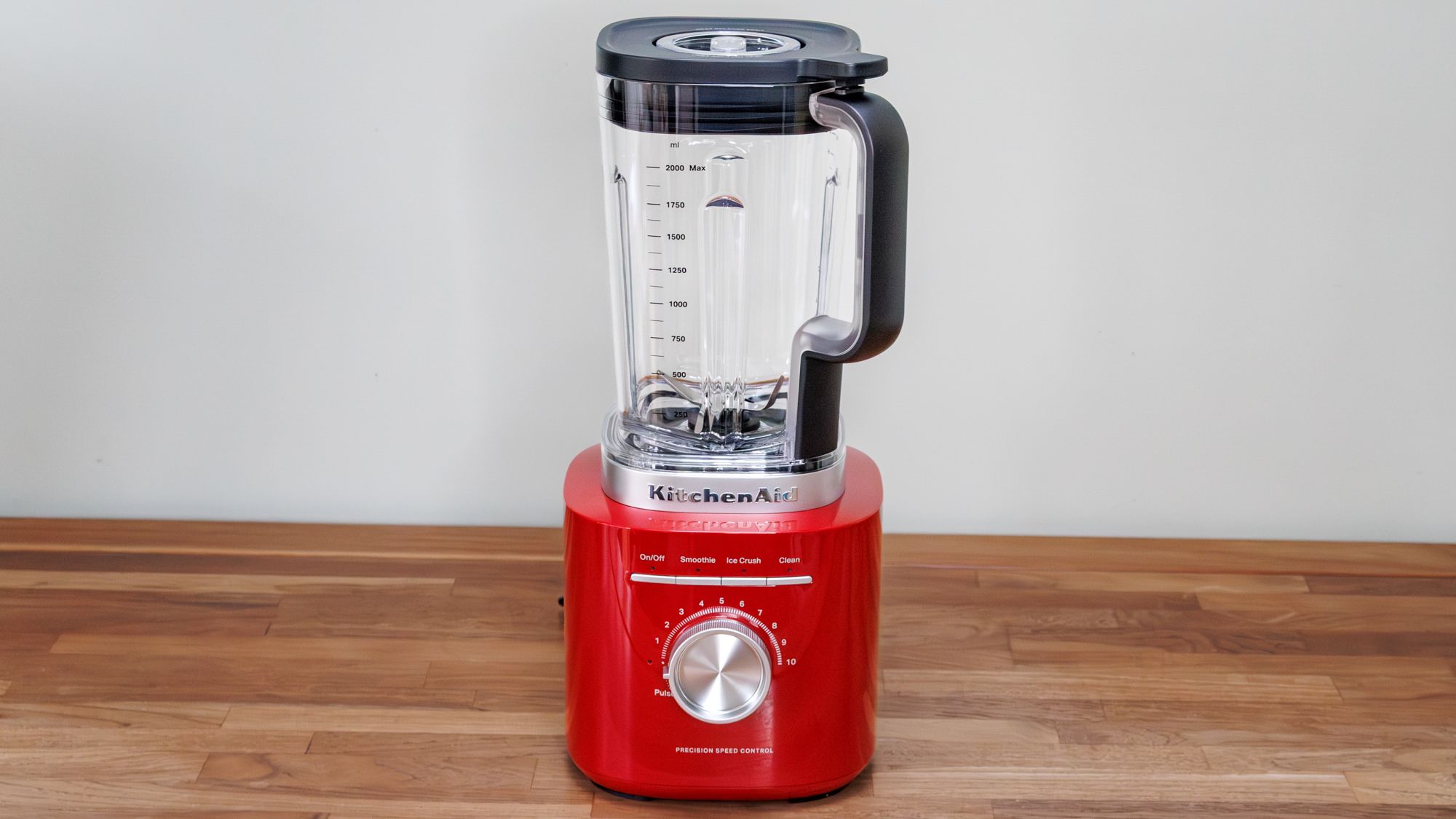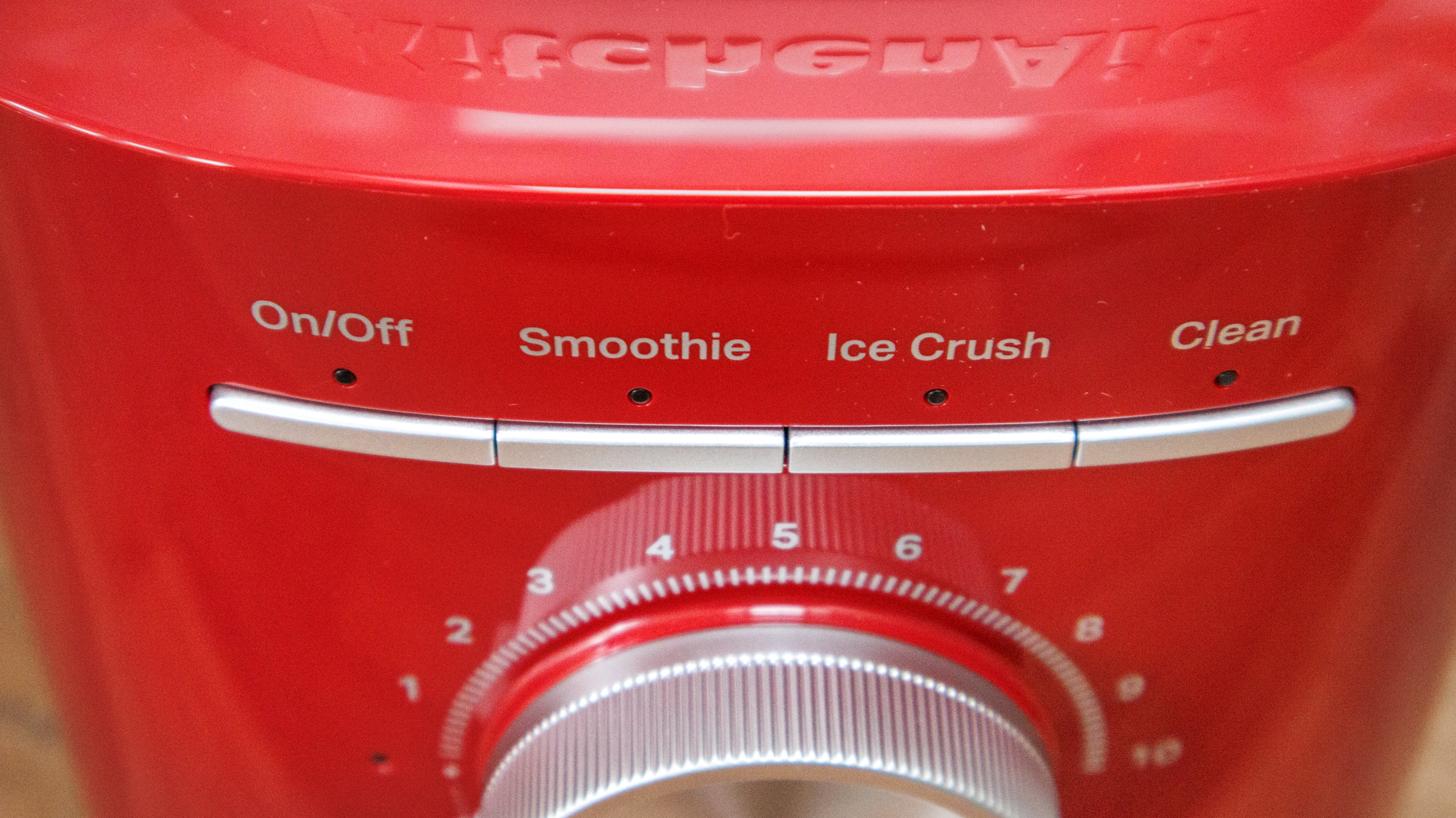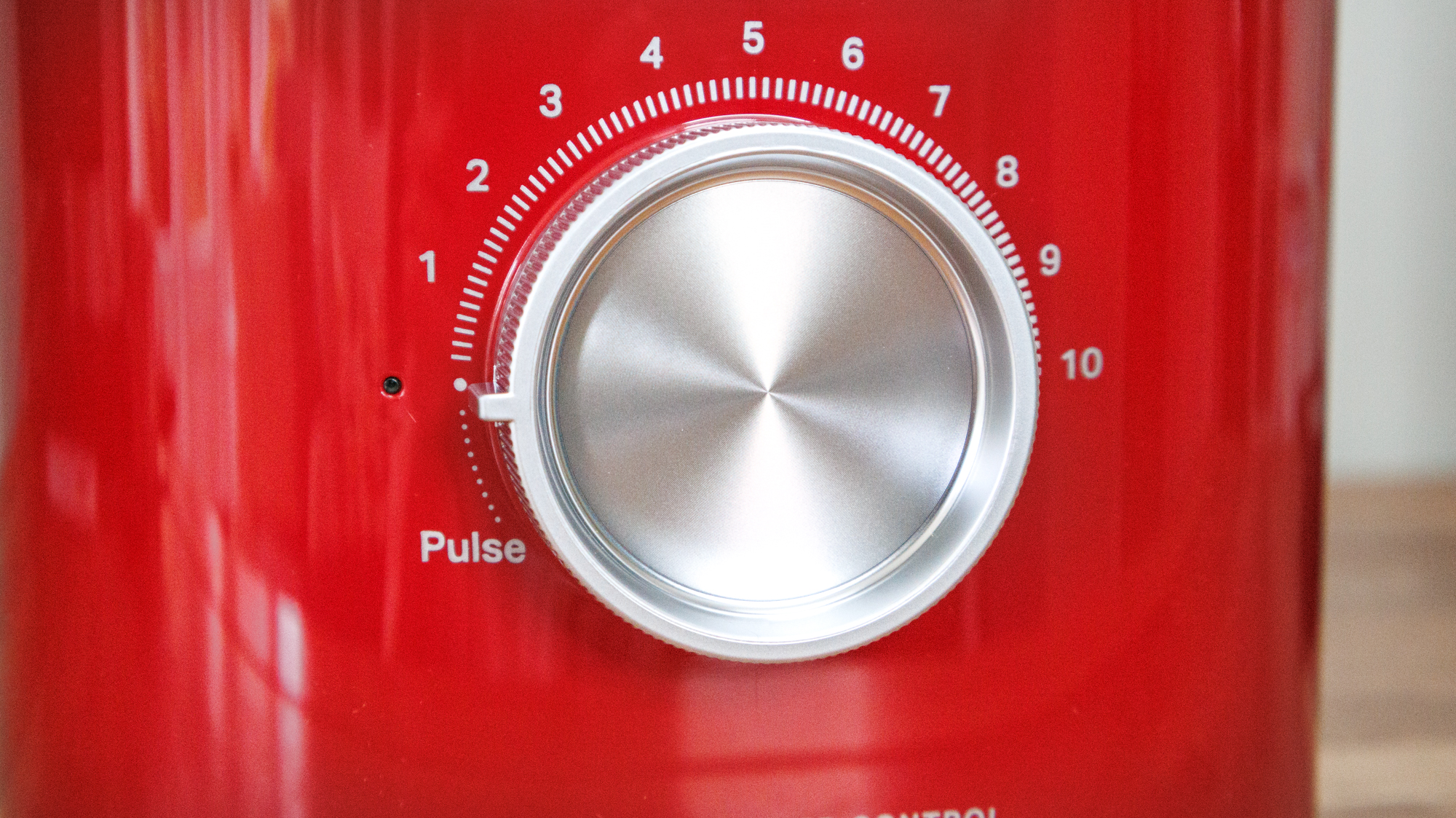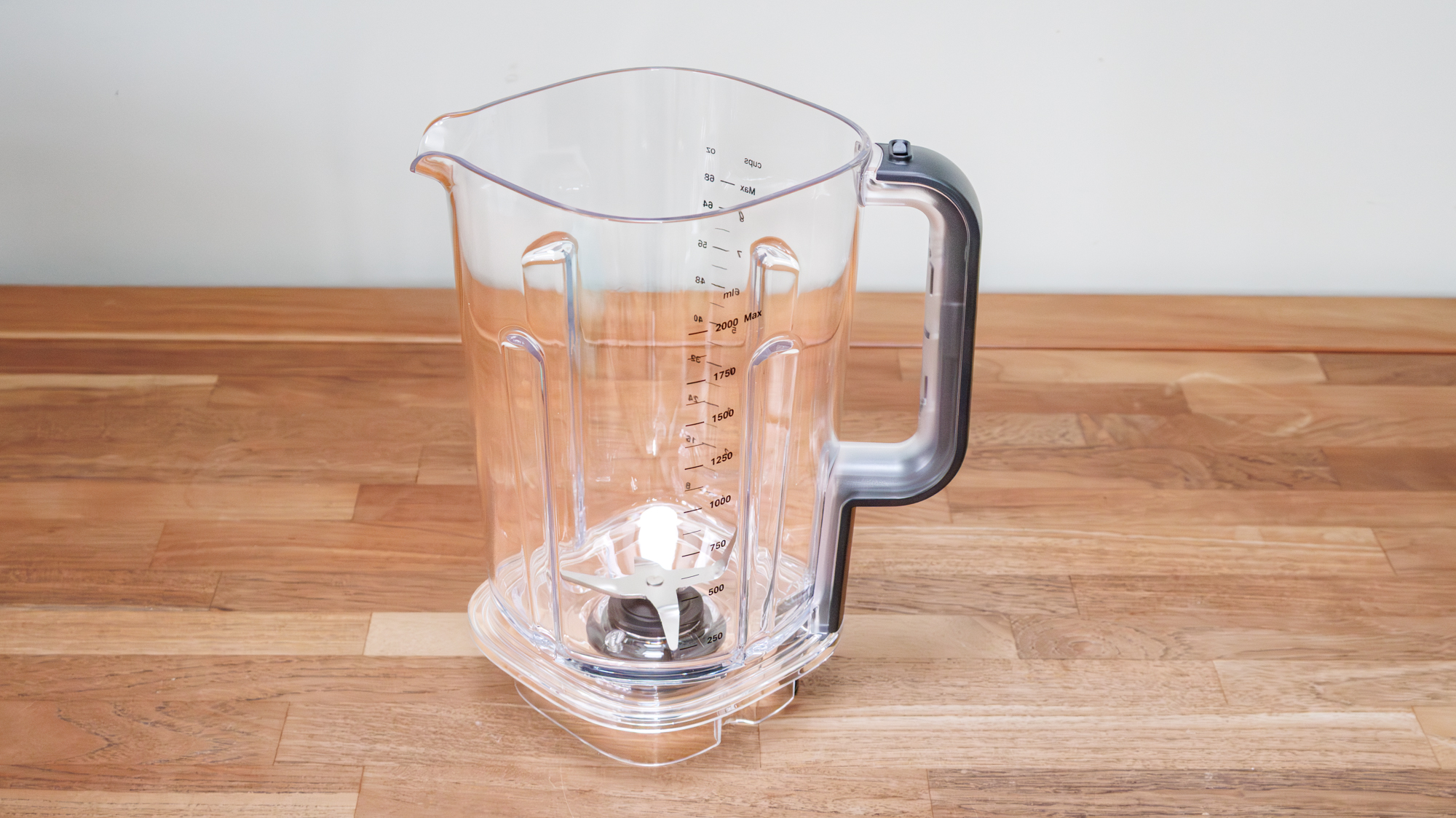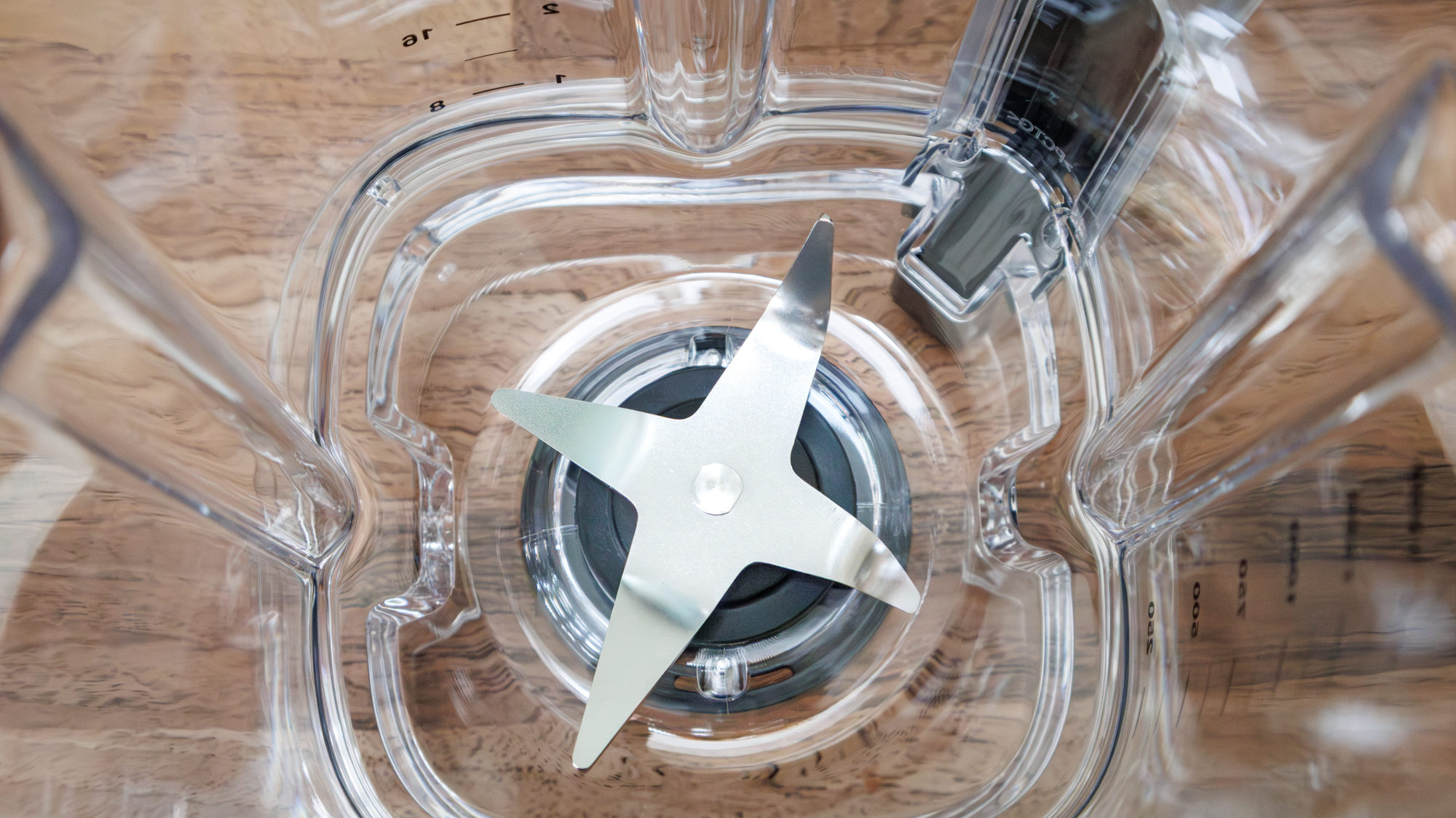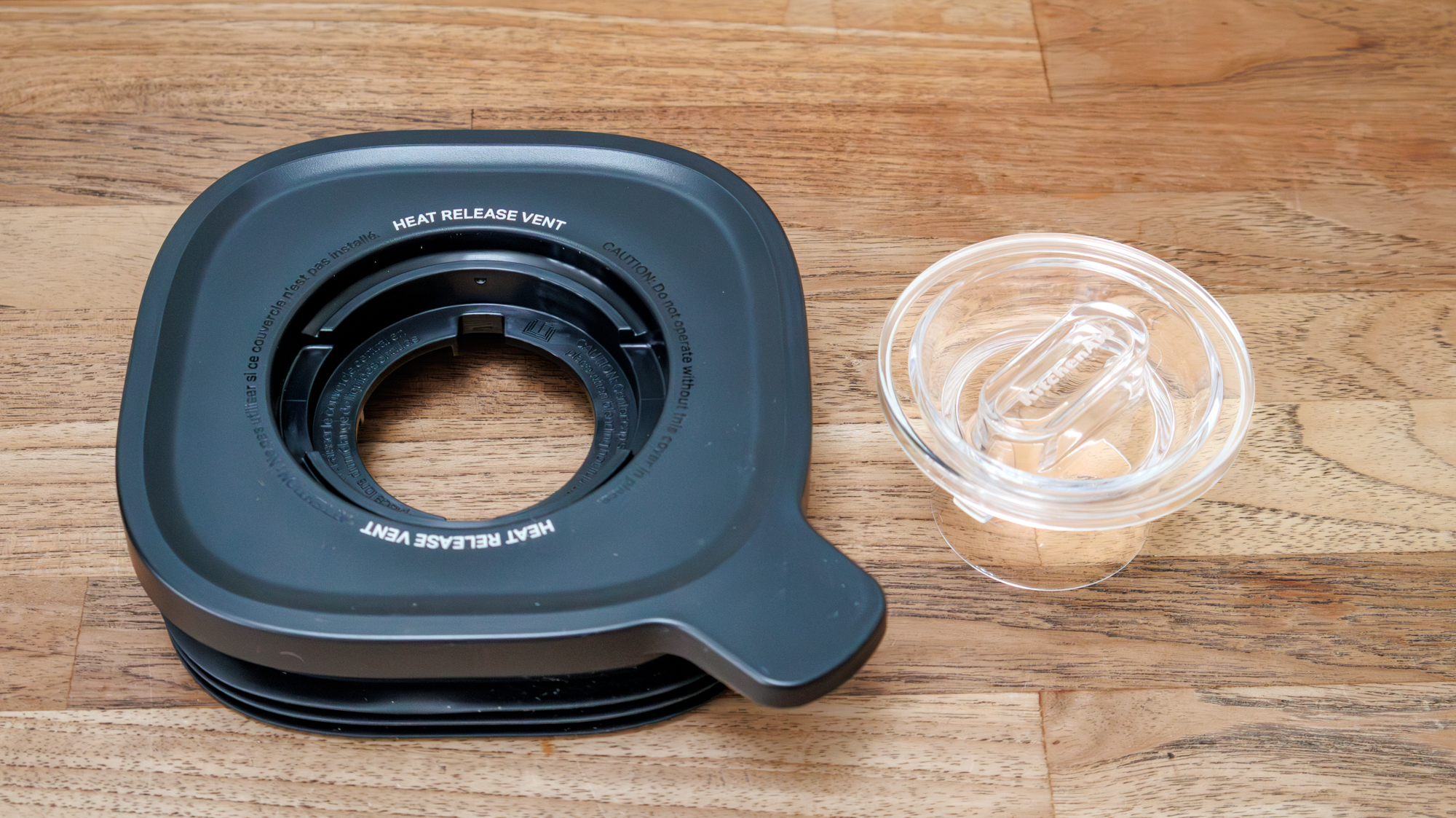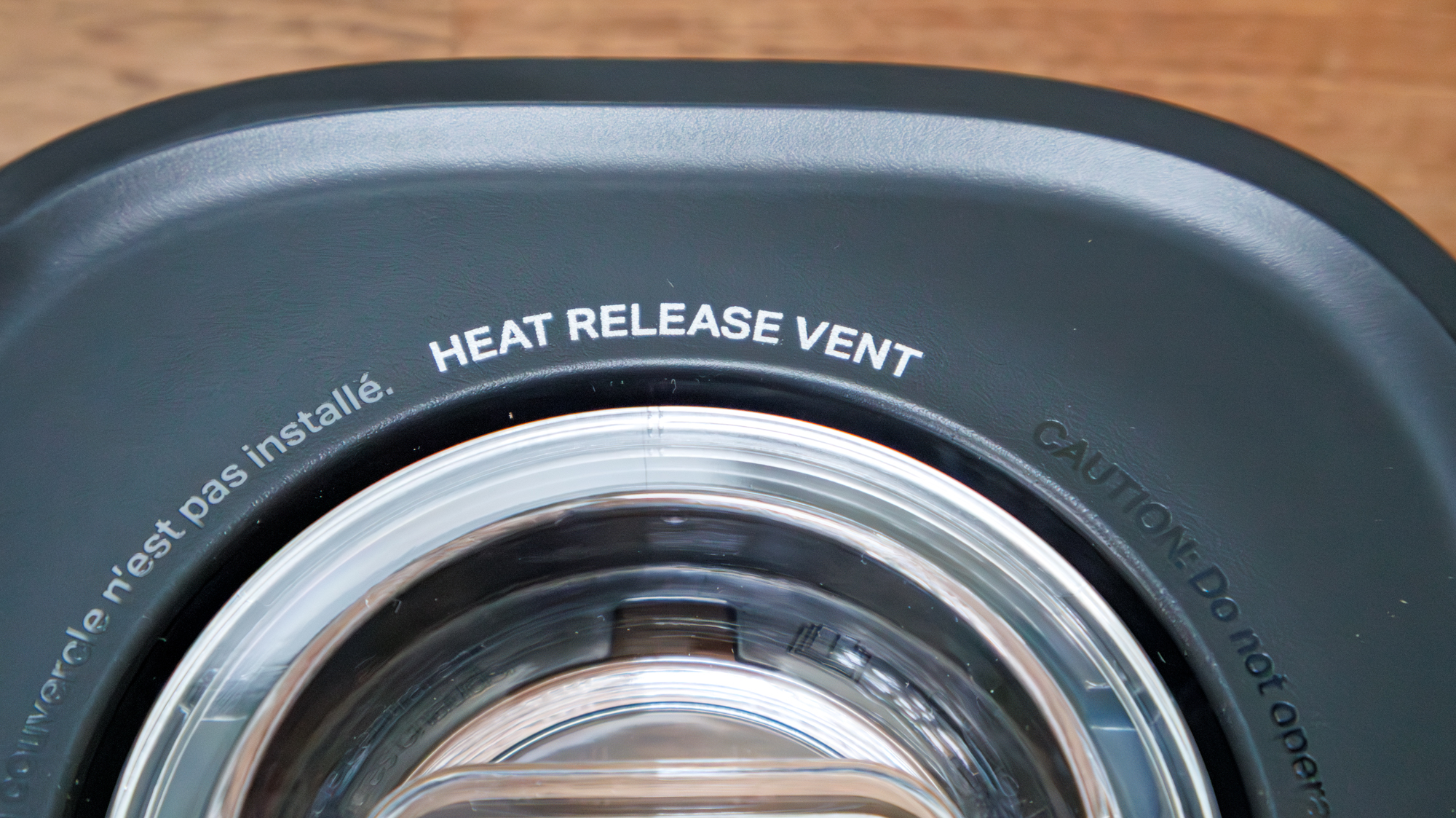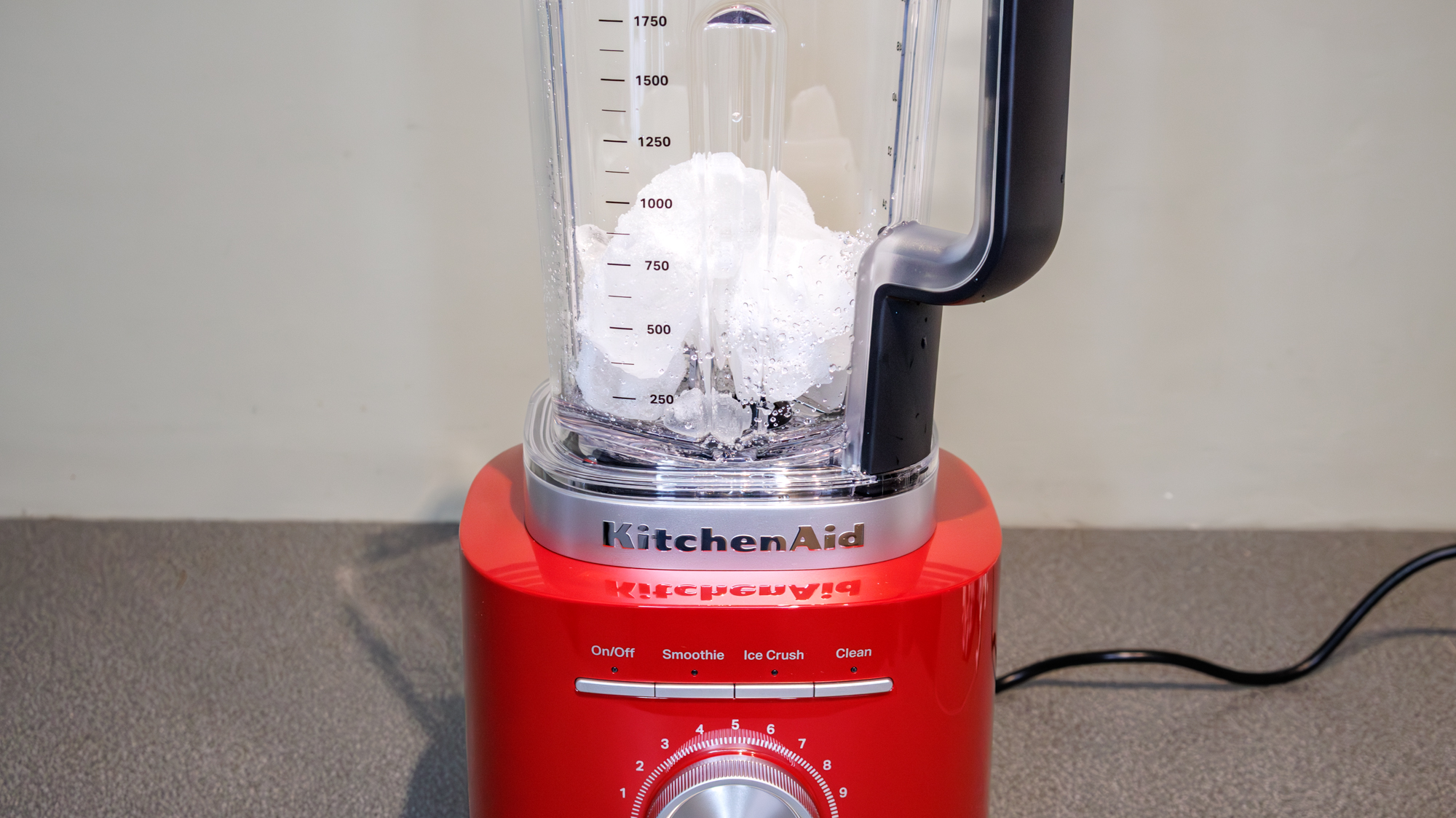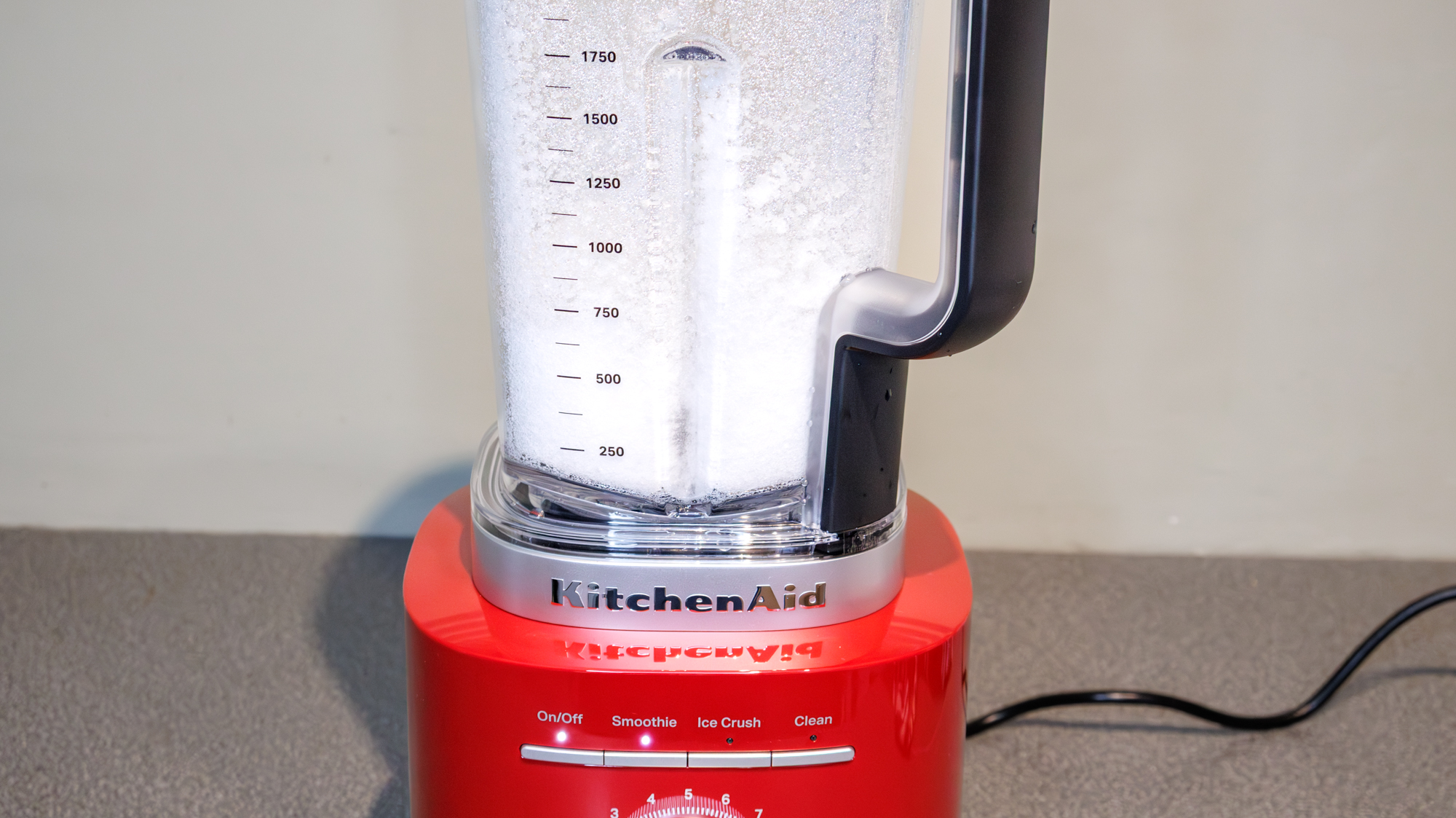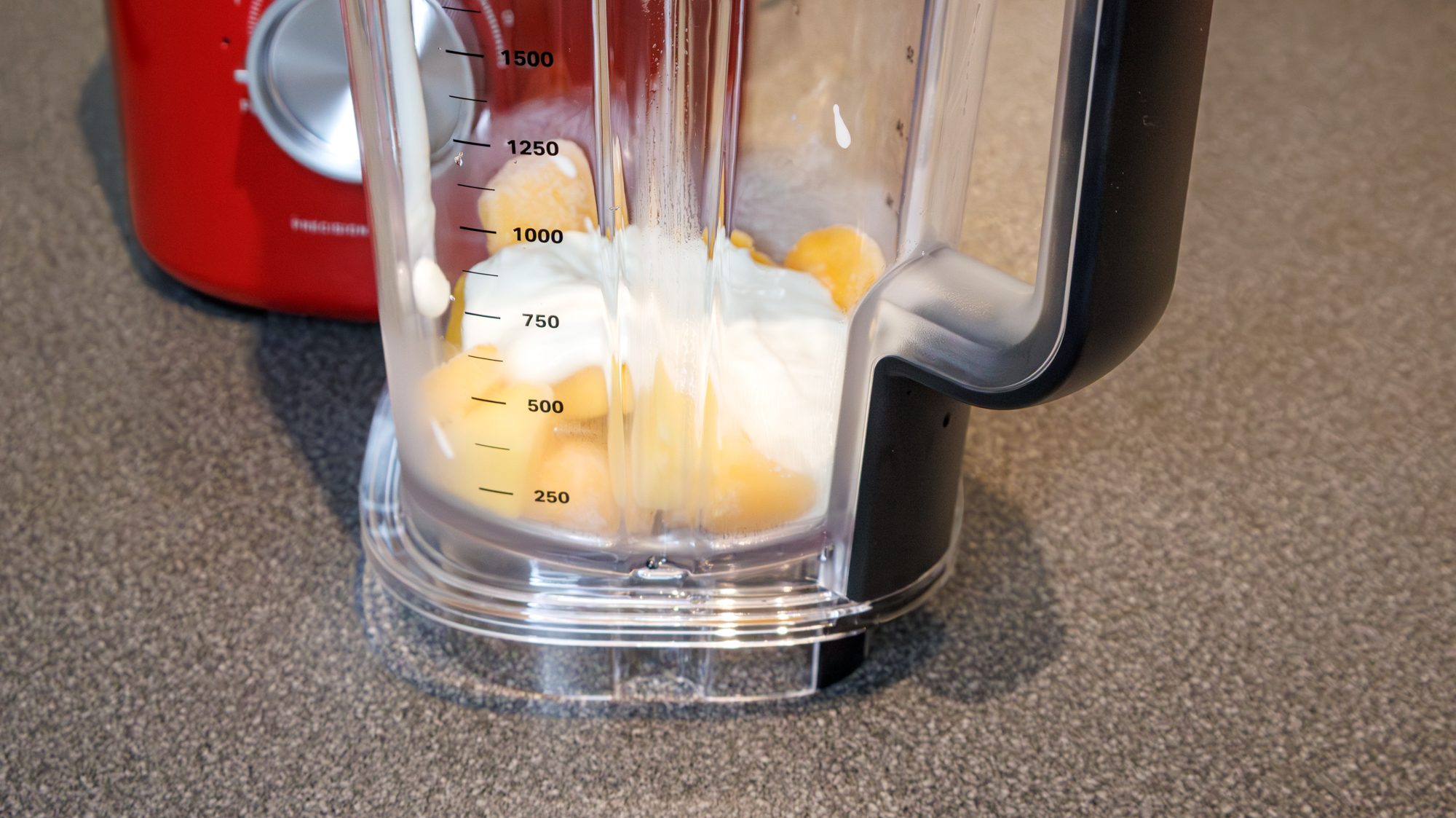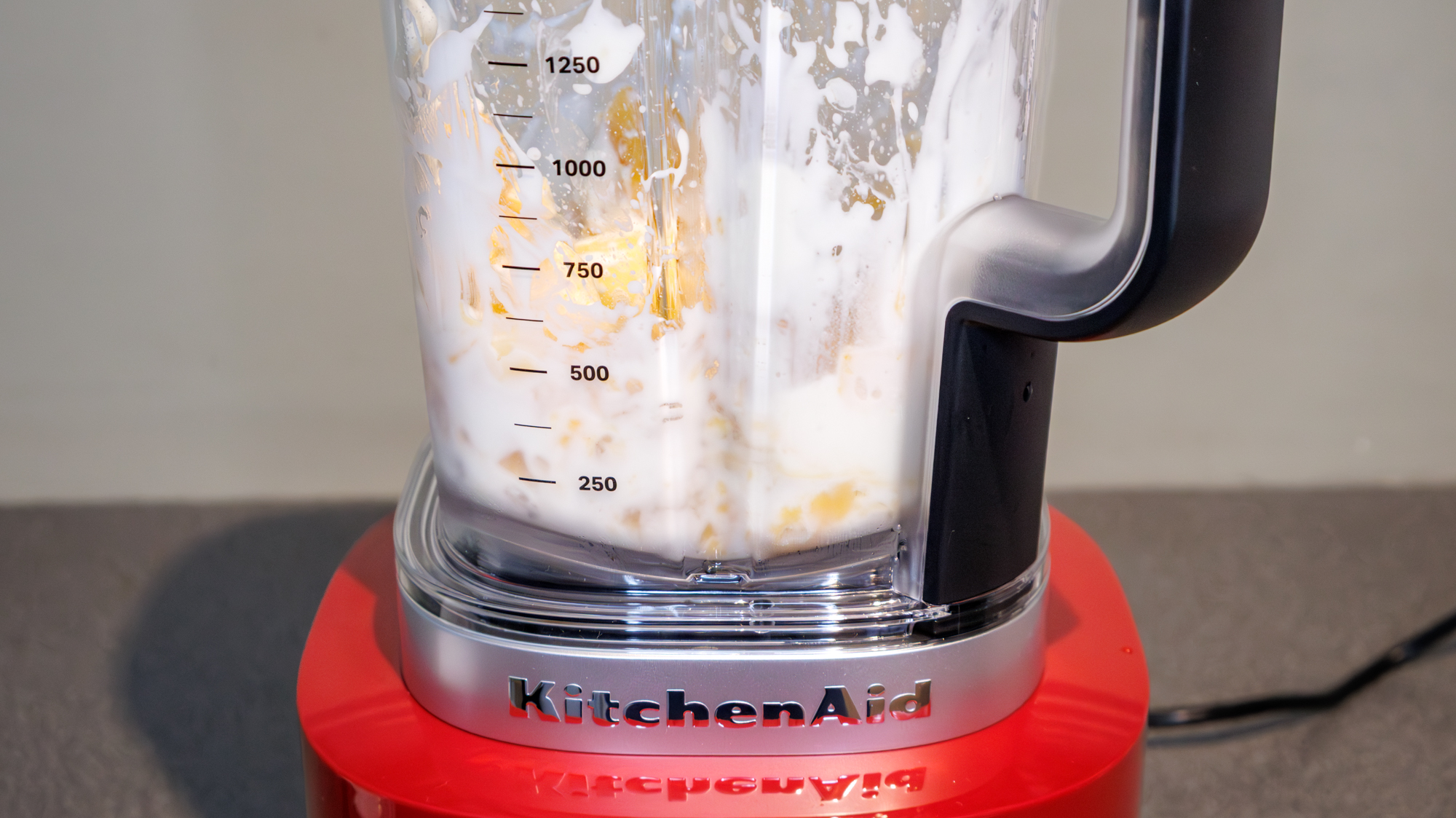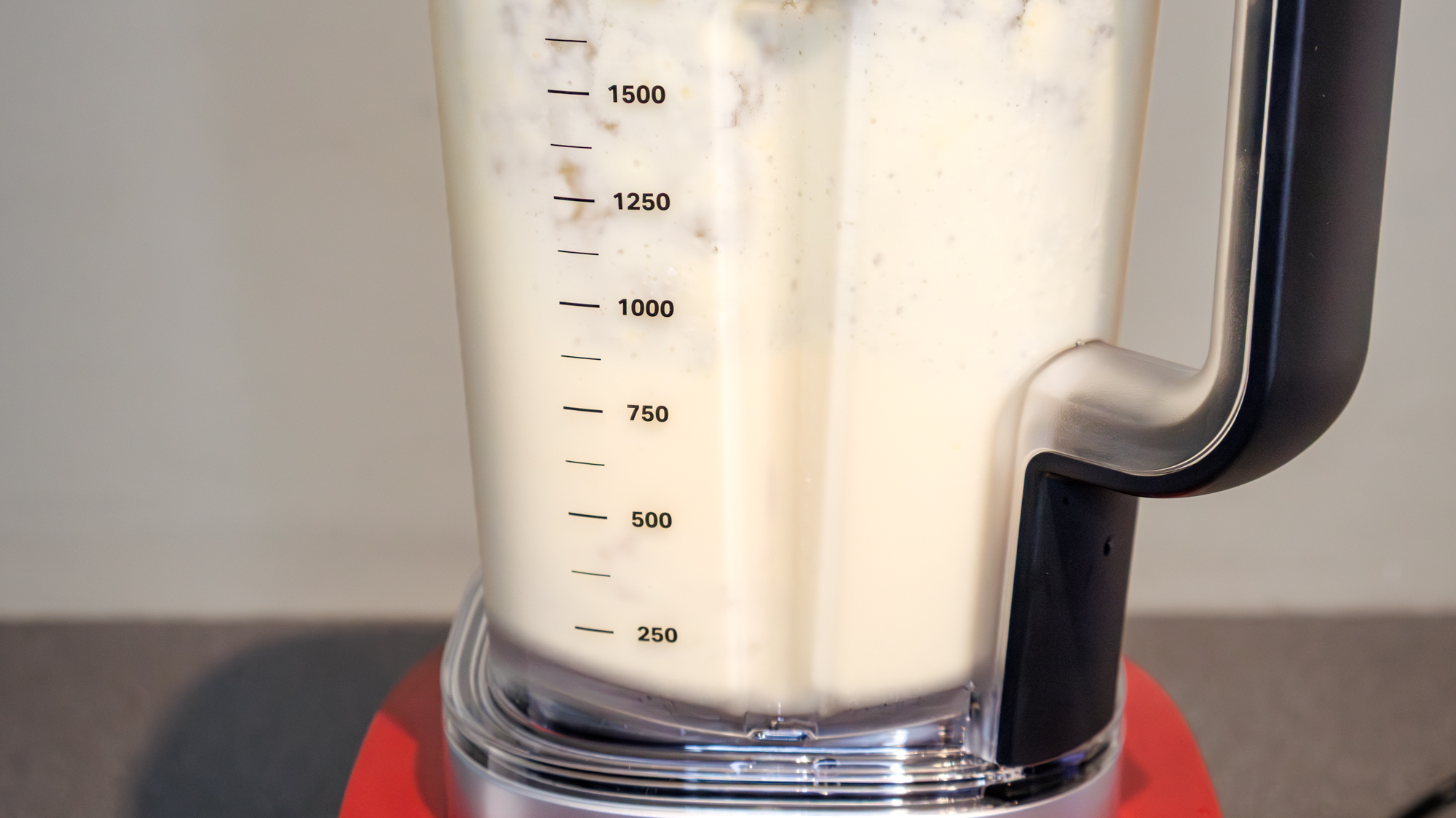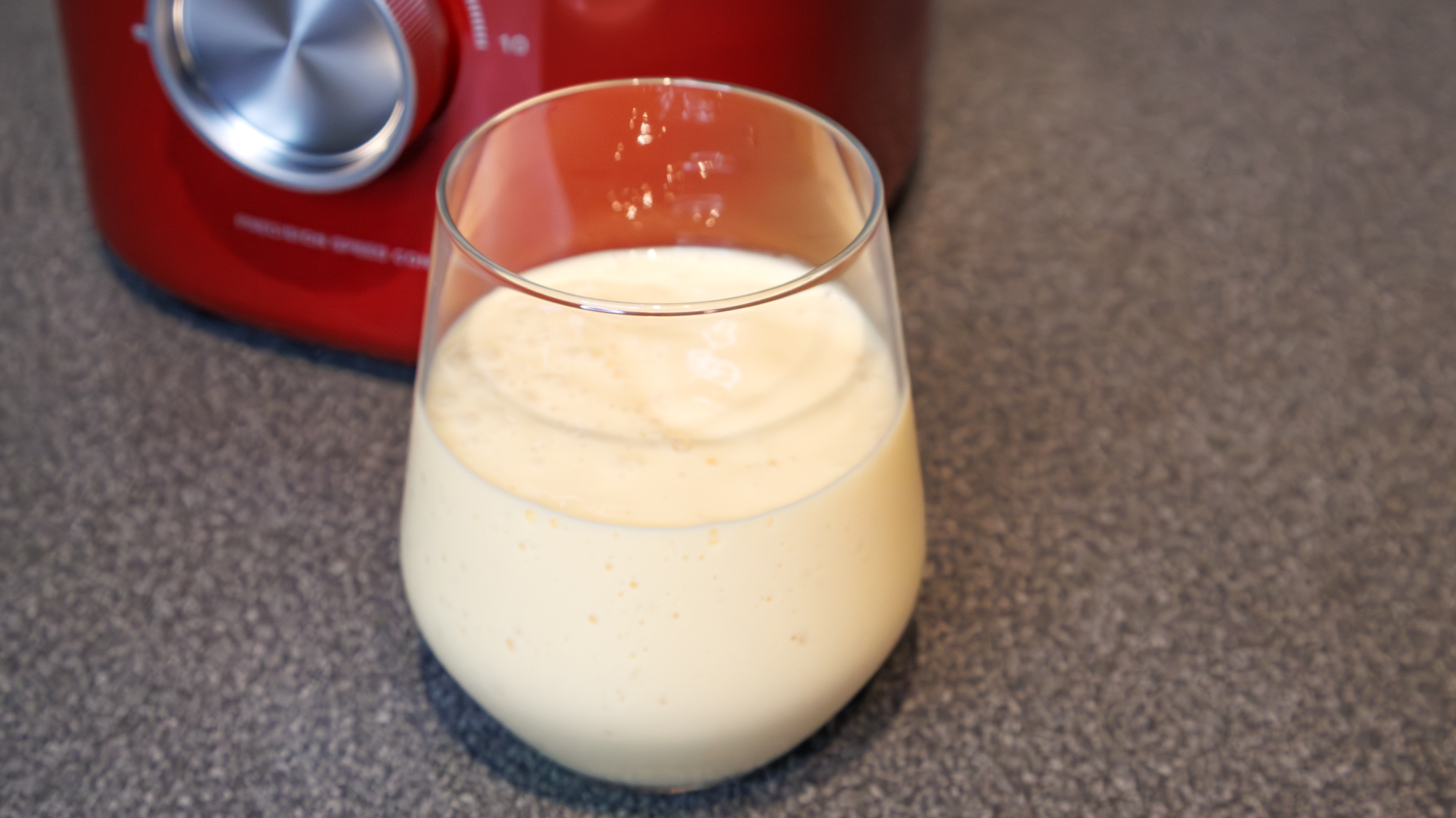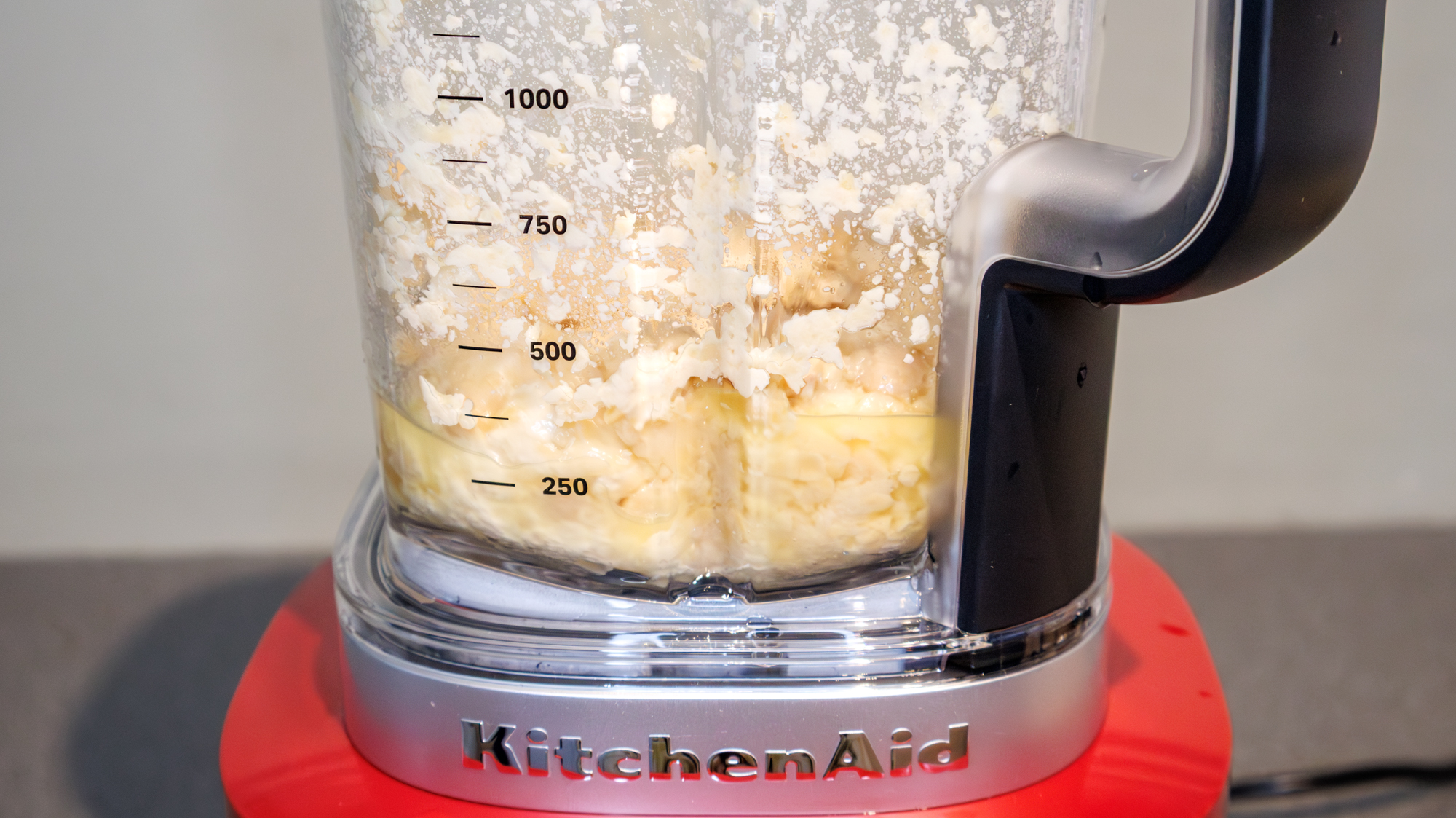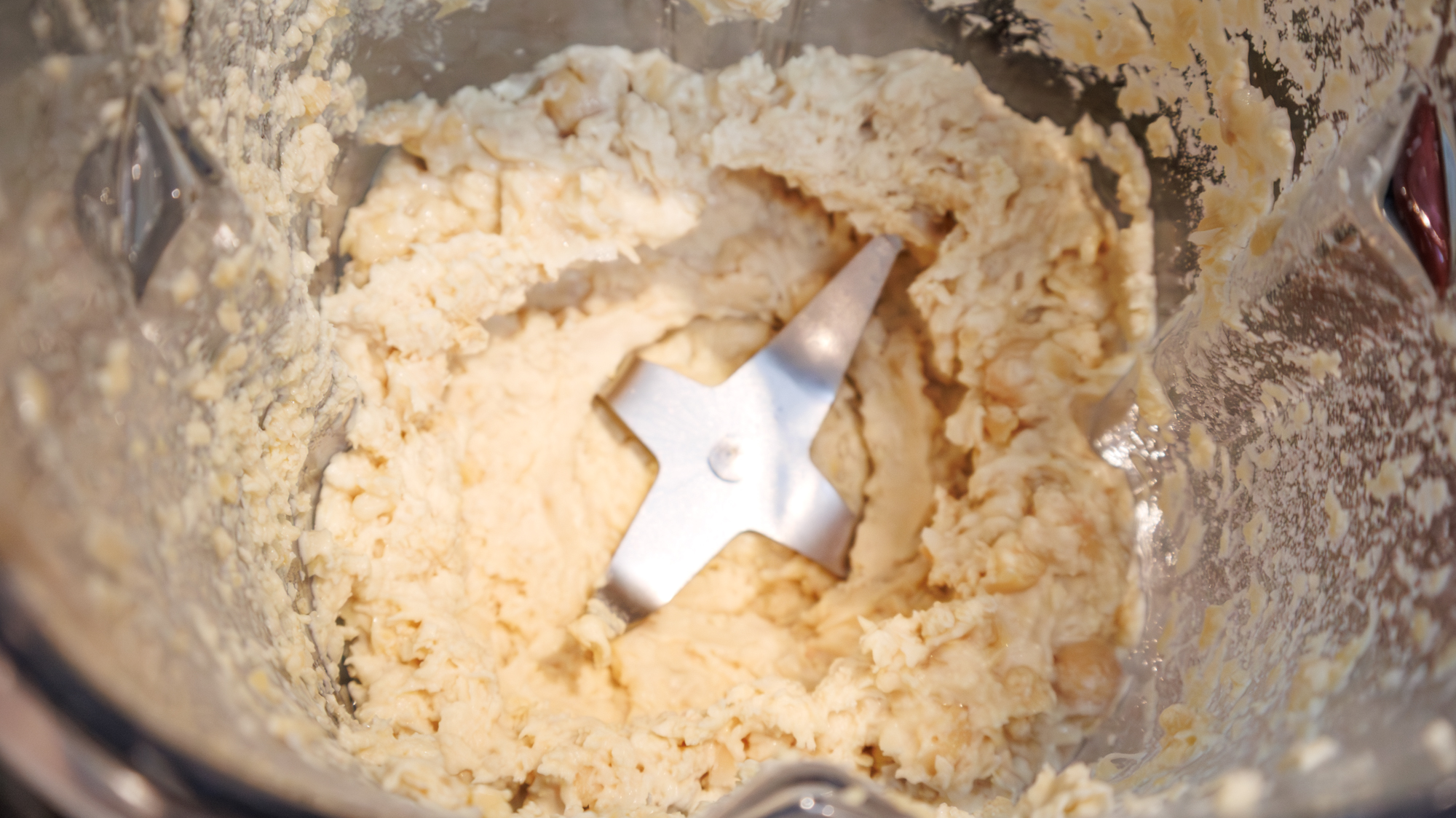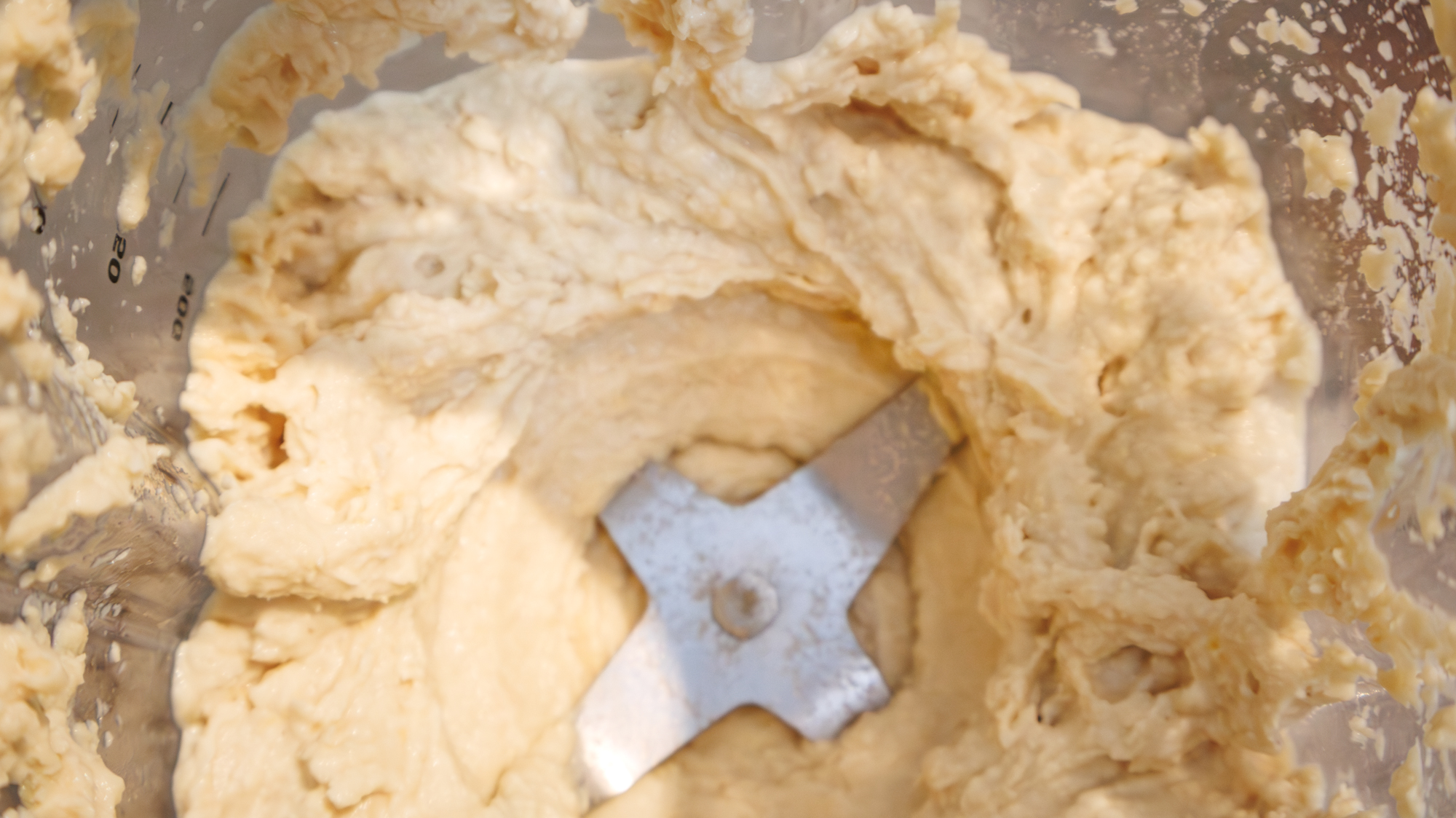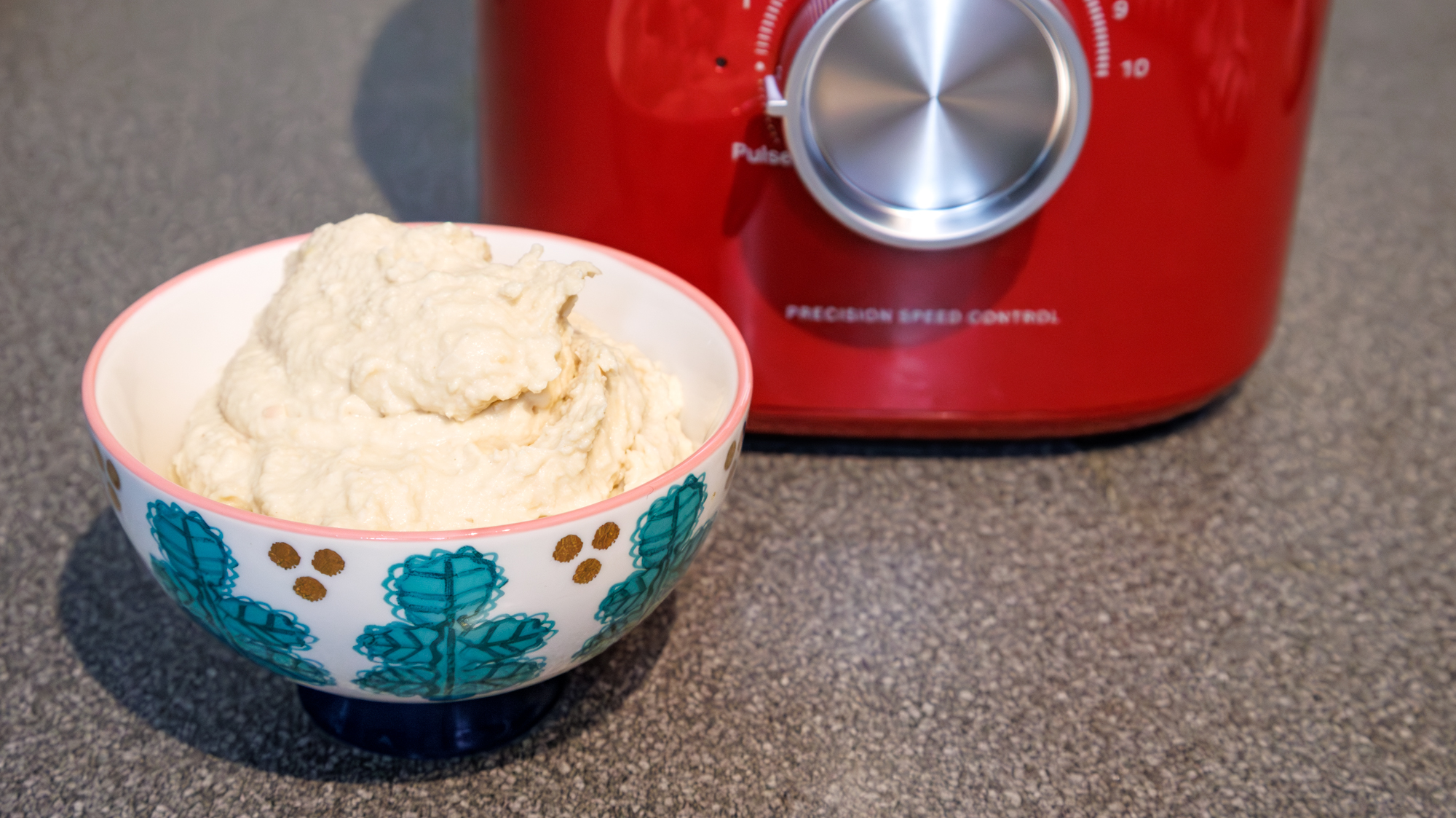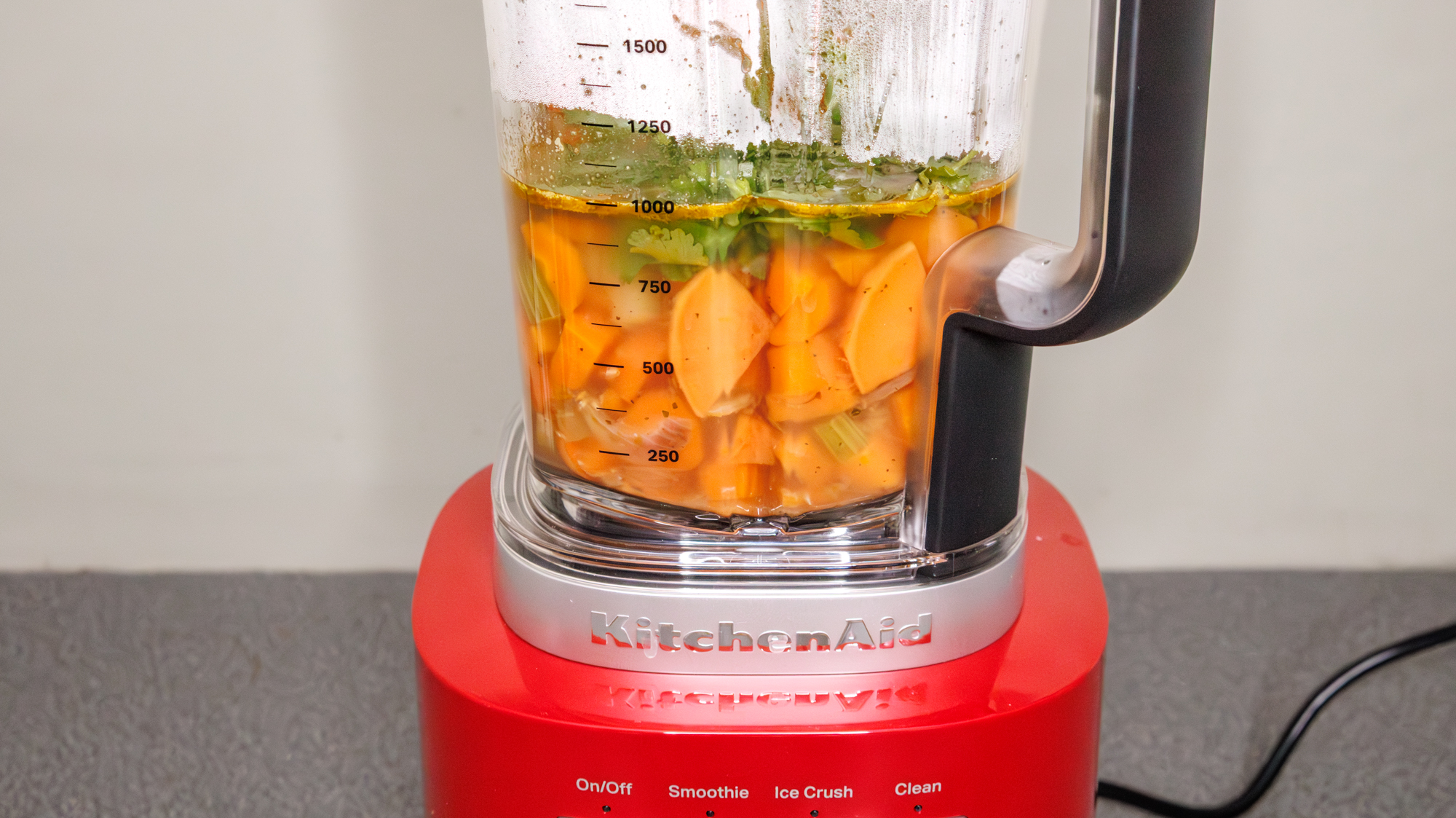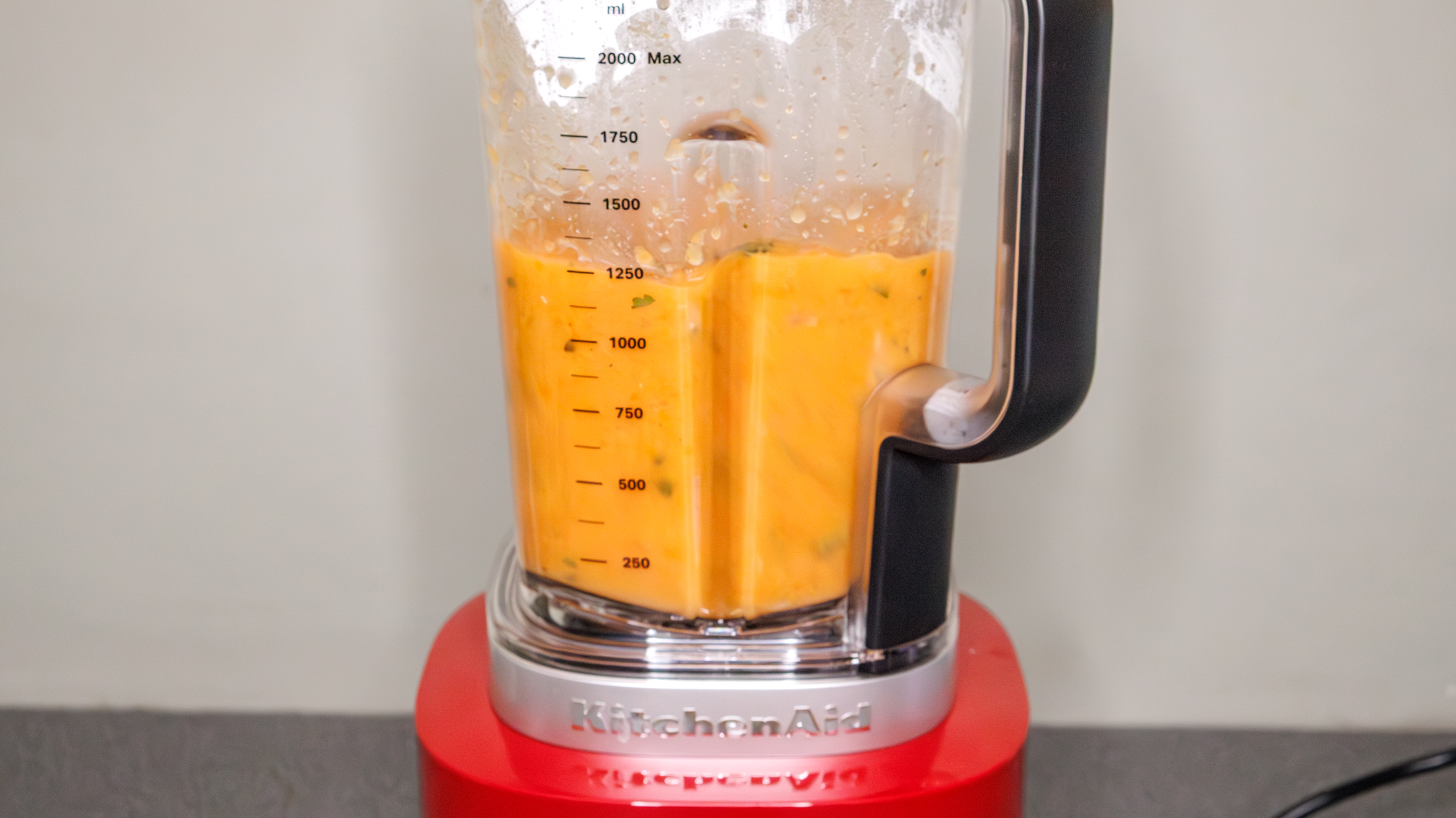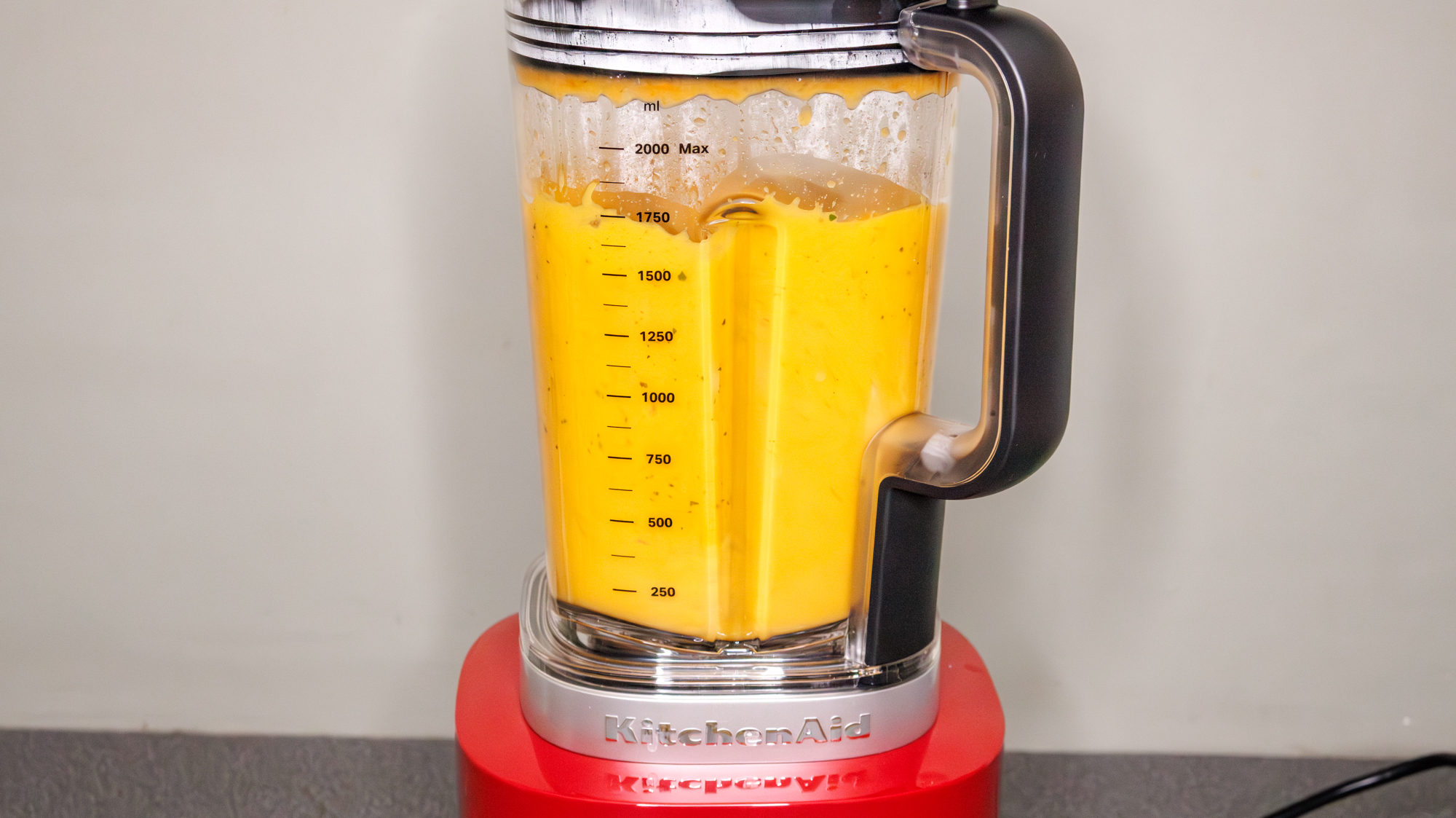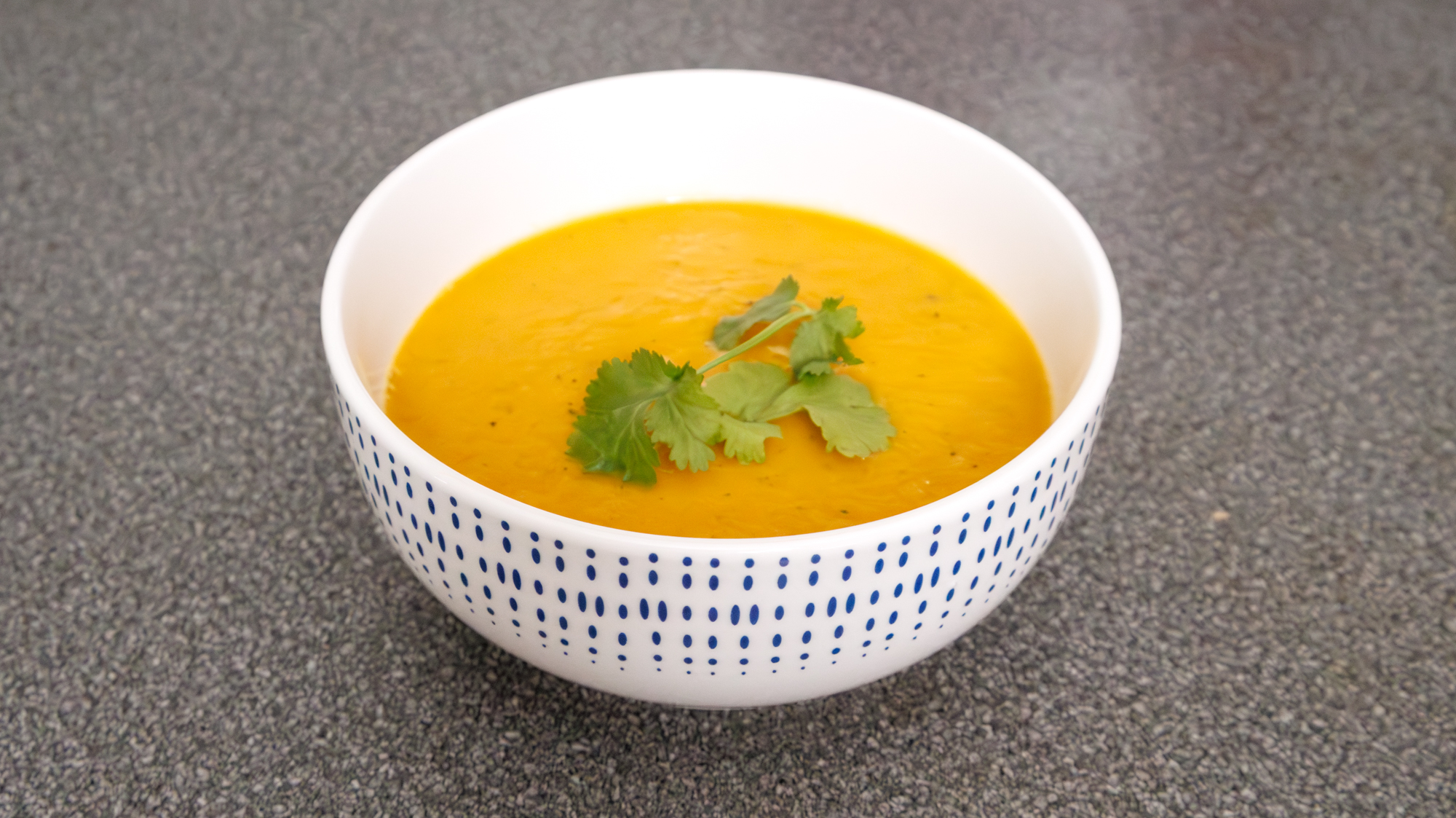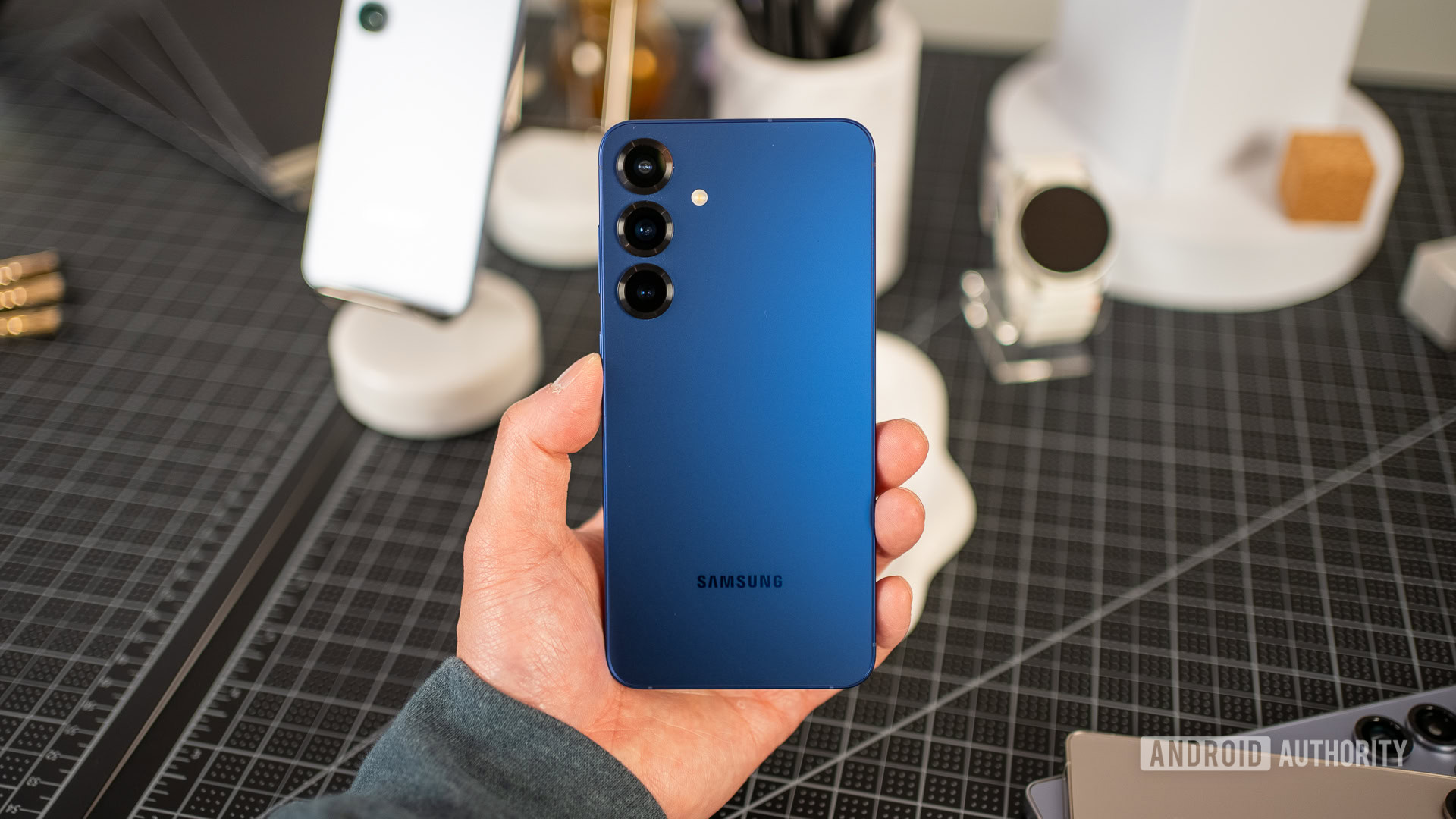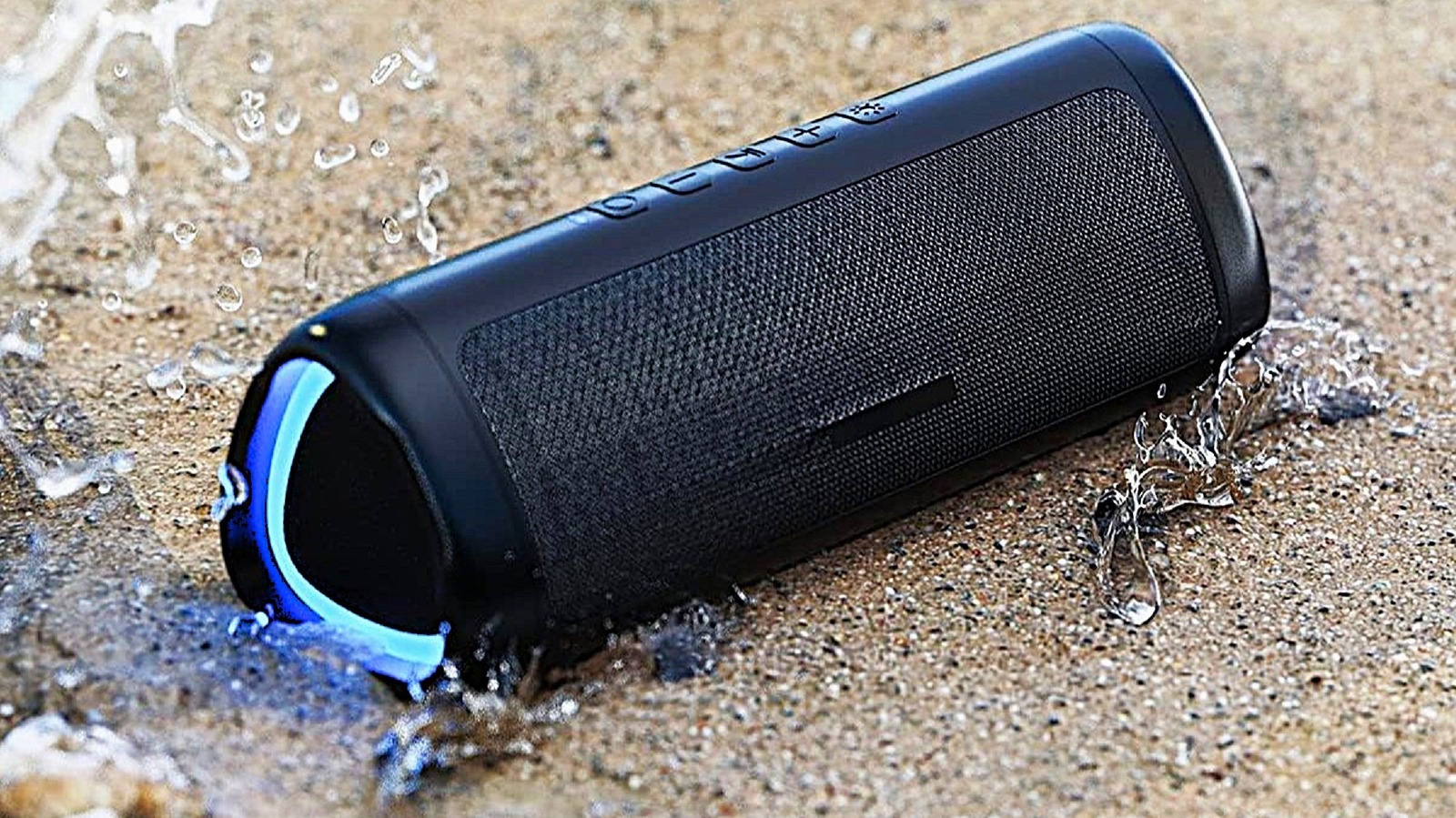KitchenAid Pure Power Blender Specs
Dimensions: 8 x 7.25 x 16.75 inches
Weight: 7 pounds 11 ounces
Capacity: 68 ounces
Power: 1,700 watts
Settings: Pulse, 10 variable speeds; 3 one-touch settings
Warranty: 1-year full warranty
KitchenAid is known for making some of the best stand mixers, and has a solid reputation in the kitchen appliance market. In fact, I own a KitchenAid Artisan stand mixer and rate it highly. So, when I heard we had the opportunity to test KitchenAid’s newest blender, my hand went straight up.
We’ve already tested the KitchenAid K400, the Pure Power Blender’s premium cousin. It impressed us a lot, though it has a steeper price point at $300. Despite the more affordable price, you still get plenty of functionality with the Pure Power Blender, which offers a precision control knob, three presets and a heat release vent — and costs less than half as much.
To find out whether KitchenAid’s Pure Power Blender is up to the mark, I put it to the test over a couple of weeks. I crushed ice, blended hummus, made smoothies and soup, and wasn’t disappointed with the results. I found it to be an excellent all-rounder at a surprisingly reasonable price.
Kitchen Pure Power Blender: Price and availability
KitchenAid’s Pure Power Blender is $129.99 at KitchenAid, though I have seen it for $119 at Walmart. This compares to KitchenAid’s K400 blender, which is $289 at KitchenAid. It’s also a much more budget-friendly option than the best blender in our buying guide, the Vitamix Ascent X2, which is $499 at Amazon. It’s more comparable to the runner-up in our guide, the Ninja Detect Power Blender Pro, which is $159 at Amazon.
Currently, I’ve only spotted the blender on sale at KitchenAid and Walmart, and it doesn’t appear to be stocked by other popular retailers yet.
Kitchen Pure Power Blender: Design
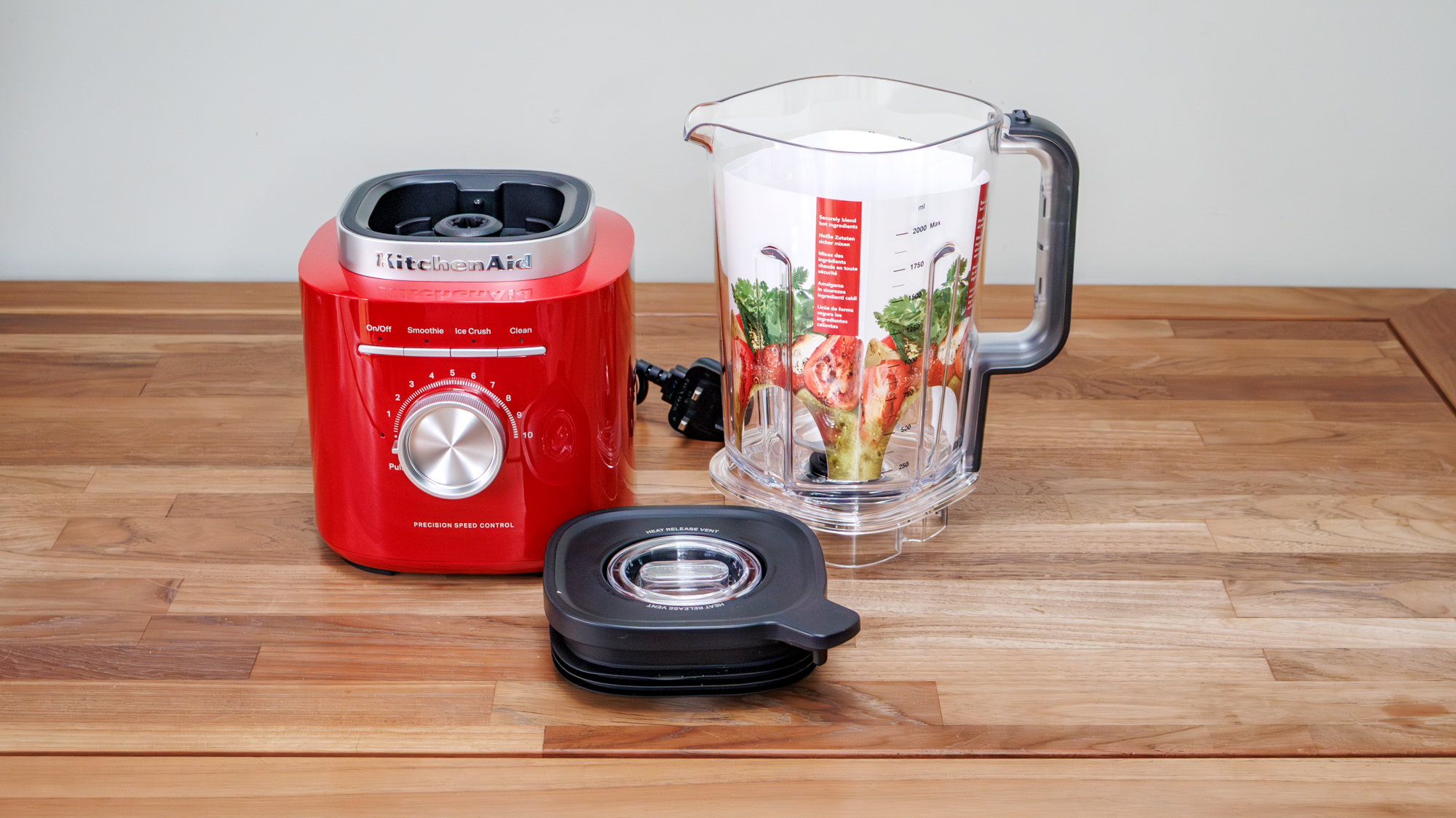
The Pure Power Blender still hints at the retro design we associate with KitchenAid, yet it’s slightly more contemporary in appearance than the K400. It has a solid cube-like base, with curved corners, and silver controls.
I tested the blender in the Empire Red colorway, but it’s also available in Black Matte, Charcoal Gray and Porcelain White. While four color options seem like a good choice, if you own a KitchenAid stand mixer, the chances are you won’t find a blender to match your mixer’s color.
The controls are intuitive, with an on/off button at the top and options to create smoothies, crush ice, and clean the machine. These presets are based on optimal speeds and times to crush ice, blend a smoother or clean the appliance. You can find out more if you download the product guide, but this information isn’t included with the product.
The Precision Control knob allows you to turn it left to ‘Pulse’, or right to select speeds 1-10. But you can also move the dial to variable speeds in between each level.
The plastic jug sits neatly on top and features a vented lid, allowing steam to escape during a blend. And if you look inside, you’ll see the 360 asymmetrical blade design. It also has an impressive capacity, holding 68 ounces. So, if all you want is to blend single-serving smoothies, this might be too big.
Overall, I’m impressed with the design and it’s easy to use. However, I did find the lid on the jug a little tricky to remove, although this does mean it has a tight seal.
Kitchen Pure Power Blender: Performance
To see how the KitchenAid Pure Power Blender performed, I tested it over several weeks in my kitchen. I used the presets and manual controls to see how it performed blending hot and cold food, and hard and soft items. Here’s how I got on.
Ice
With fall underway and winter approaching, I won’t be crushing ice for a while, although it’s definitely a handy feature for making cool summer drinks and holiday cocktails.
Crushing ice takes some power, and I wasn’t sure what to expect with this blender, but it didn’t disappoint.
I placed a good handful of large ice cubes in the jug and pressed the ‘Ice Crush’ preset button. It runs at an optimal speed for 30 seconds before automatically switching off. I also monitored the sound level, which registered at an almighty 85dB. If you’ve got a sleeping baby in the house, you’re best of waiting until it’s woken to use this setting.
I was pleased with how the appliance cut through the solid ice, and it resulted in a good crush perfect for drinks.
Smoothies
From hard ice to soft fruits, my next test was to make smoothies using a variety of fruits and dairy. One of my favorite combos is mango and Greek yogurt with a splash of milk.
I started by adding chunks of frozen mango to the blender with some thick Greek yogurt and then pressed the ‘Smoothie’ button. It was struggling to mix at first because there wasn’t enough liquid, so I added the milk at this stage. Without having to remove the whole lid, I removed the central section and poured in the milk.
It’s clearly much easier to add everything in one go —and KitchenAid does recommend adding the liquid in before any solids — but I wanted to see how the blender coped with ‘drier’ ingredients.
I stopped the blender after 20 seconds to check the mix, but it still had a way to go. I ran it again for another 10 seconds, and it was perfect. Although I was interrupting the blender’s flow to judge the mix, the preset runs for 45 seconds, which would be perfectly adequate for all blends, whether you’re pureeing vegetables or making a milkshake.
I was also surprised that the sound level registered above that of crushing ice, at over 100dB it’s officially the noisiest blender we’ve ever recorded at Tom’s Guide!
Hummus
I can eat hummus for breakfast, lunch and dinner, so I was more than happy to make this tasty dip in the blender. I stuck to my favorite BBC Good Food recipe and added a can of chickpeas to the blender with the olive oil.
I blitzed these two ingredients in the blender, using the manual control knob, starting on level 2. However, I quickly saw that the mixture was sticking to the edges of the jug and needed some manual intervention. After stopping the blender, I removed the lid and used a spatula to scrape down the sides, then blended again.
I was struggling to get the mixture completely smooth, so I added the tahini, garlic, lemon juice, and lemon rind, and gradually increased the power level. The extra moisture aided the blending process, and I achieved a smooth consistency.
When using the manual controls, rather than the preset buttons, the blender will automatically switch off after three minutes. Although I’d recommend you always stay on hand when using a blender, if you get distracted, you’ll know the blender will shut off.
Soup
Soup can be an excellent source of nutrients, and it’s a good way to use up leftover vegetables that won’t quite make a meal. What’s more, this appliance has the functionality to blend hot ingredients, which is good news for soup lovers.
I started by cooking onions, celery, carrots and sweet potatoes in my cast-iron Dutch oven with a vegetable stock. Once the vegetables were tender, I added them and part of the stock to the blender, being cautious not to overfill it, as the instructions advise placing a maximum of 40 oz of hot liquid in the jug.
When I placed the lid on the jug, I noticed the lights above the preset buttons started flashing. I was alarmed, but after a quick search, I discovered that the flashing lights indicate the lid is not on correctly. After a quick adjustment, I was ready to go.
I started off by using the ‘Pulse’ function by turning the knob to the left, and did this a couple of times. The function delivers short bursts of high-speed blending. I then reverted to speed 1 — the recommended level when blending hot liquid — to complete the blend.
Out of all the recipes I tried, blending the soup was the easiest. This is down to there being a larger quantity of ingredients in the jug and a higher ratio of liquid.
Kitchen Pure Power Blender: Ease of use and cleaning
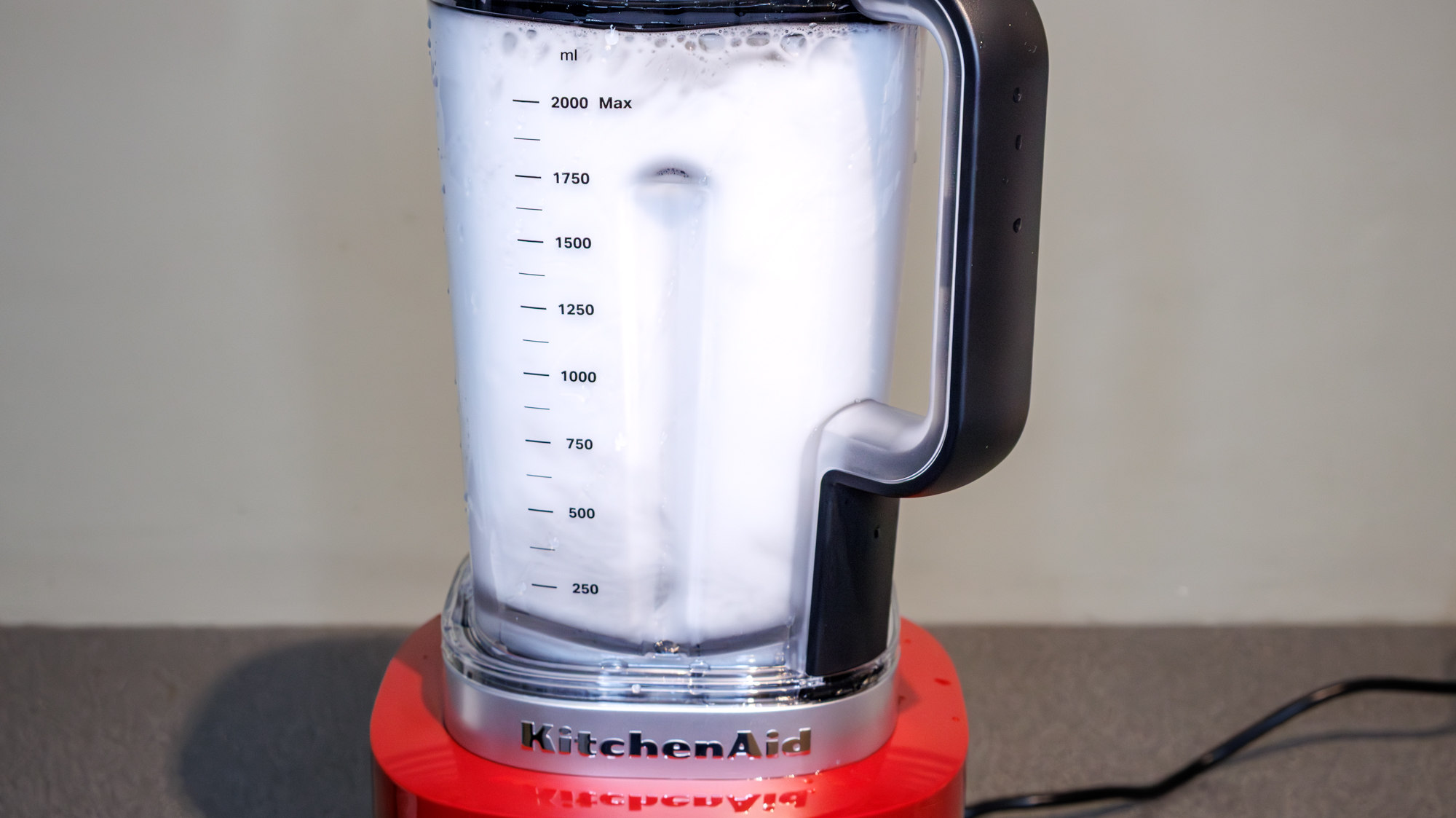
Cleaning blenders can be tricky, especially when a sharp blade is involved. But fortunately, this blender has a preset button to help remove the gunk that can get stuck around the base of the jug and the blade.
Before cleaning, I gave the jug a quick rinse with water, then half-filled it with warm water and added a couple of drops of dish soap. I put it back on the base, secured the lid and ran the ‘Clean’ preset, which lasts for 15 seconds. It removed the food from the lower section of the jug, but I still needed to clean the lid and the area at the top of the jug where the lid slots into place. However, the cleaning feature did mean that I didn’t have to manually clean around a sharp blade.
If you prefer to use your dishwasher, the lid, jug and lid center cap can be cleaned in the top rack. However, the jug is quite tall, and it was too big for my top rack. I found the base easy to clean with a warm, damp cloth, and then I wiped it over with a dry cloth.
Should you buy it?
I have no hesitation in recommending the KitchenAid Pure Power Blender as a good buy. Putting aesthetics aside — where it scores highly — it’s a powerful blender, with excellent capacity and plenty of functionality. It cuts through ice and frozen fruit, and can tackle both hot and cold foods. I particularly like the variable-speed controls, which give you extra precision over your blends. But what’s even more impressive is that you get a lot of power and functionality for your money. So, if you don’t have $500 to spend on a premium blender, you’ll get a pretty good deal with this KitchenAid.
However, it does have a large capacity, so if you’re looking for a blender for small amounts, or are limited with space, you might be better off buying a smaller appliance.

